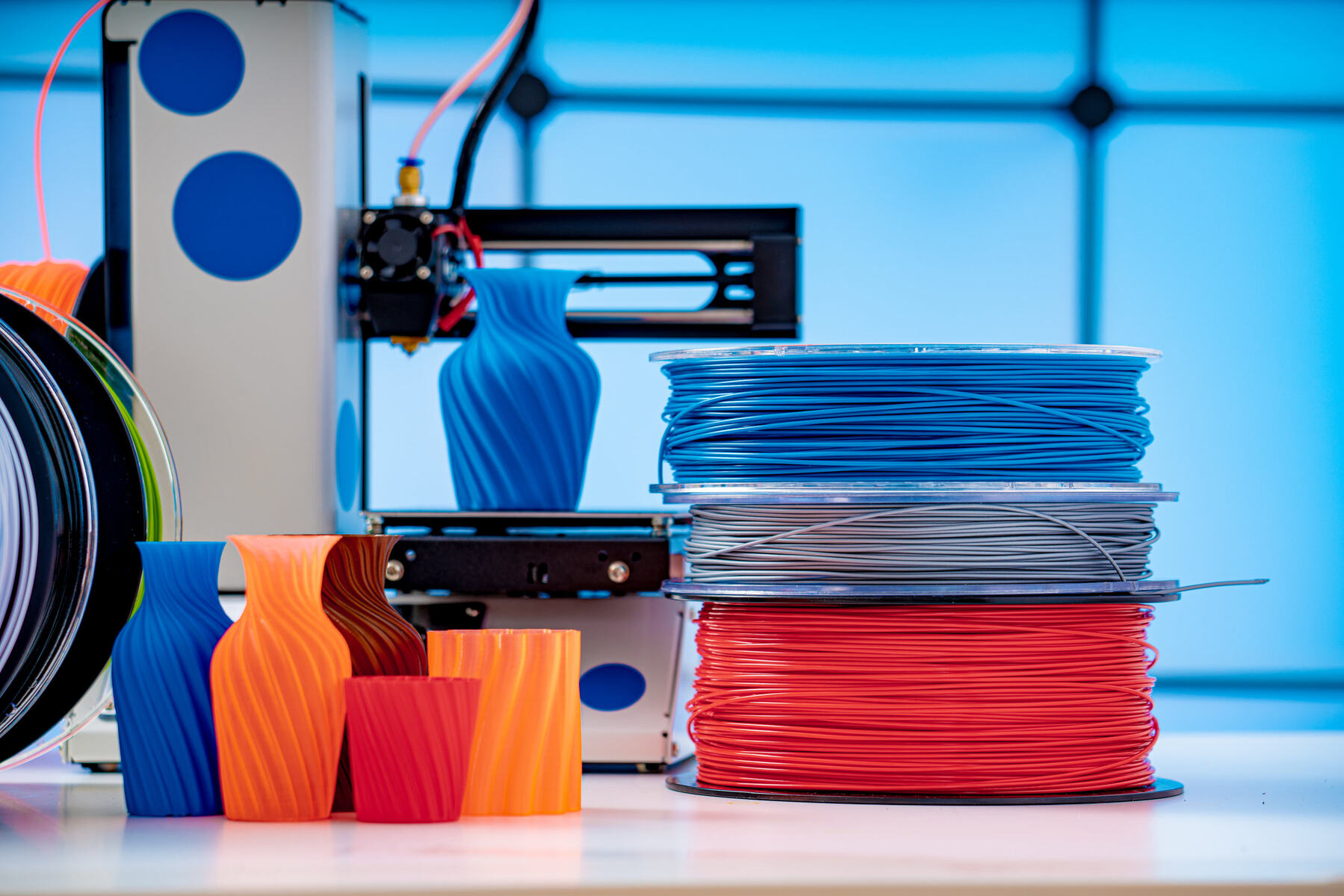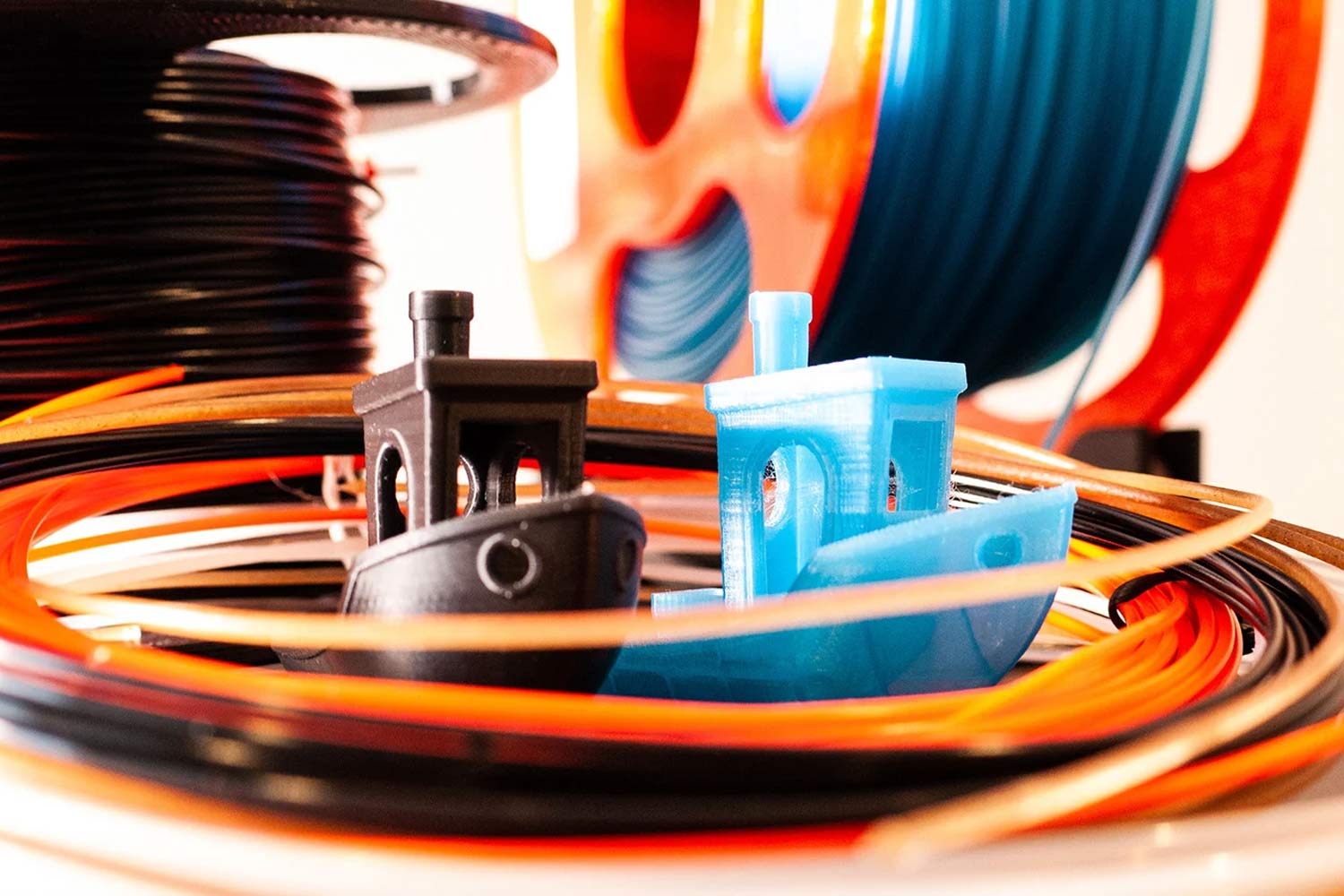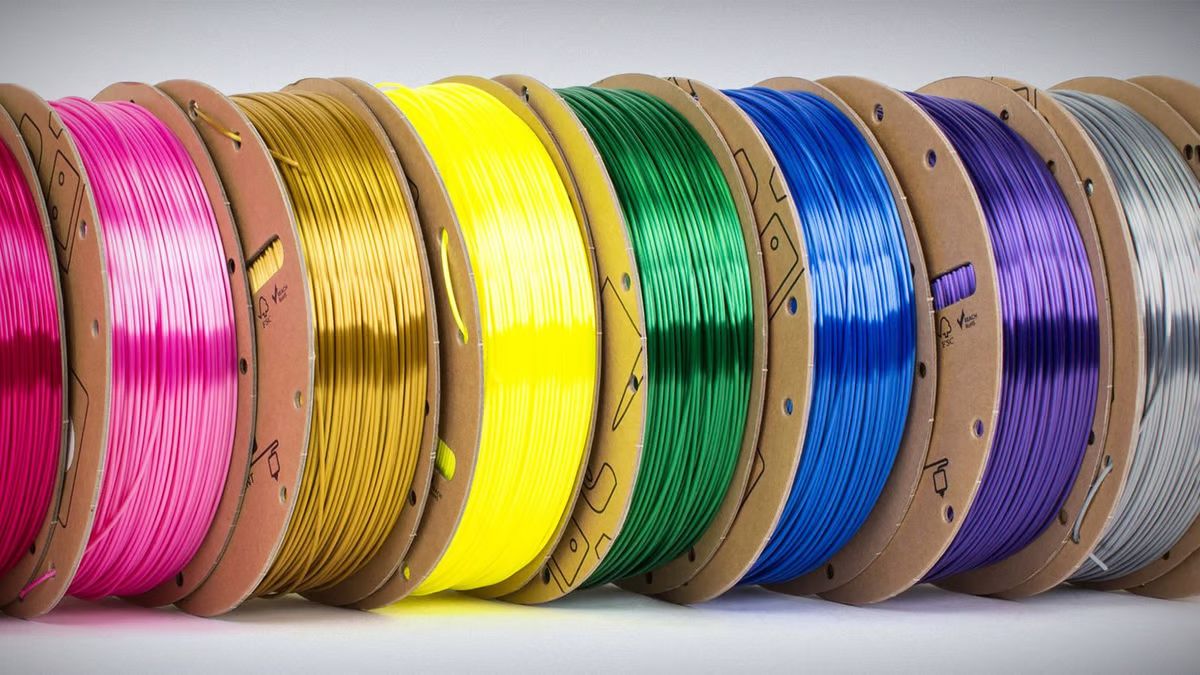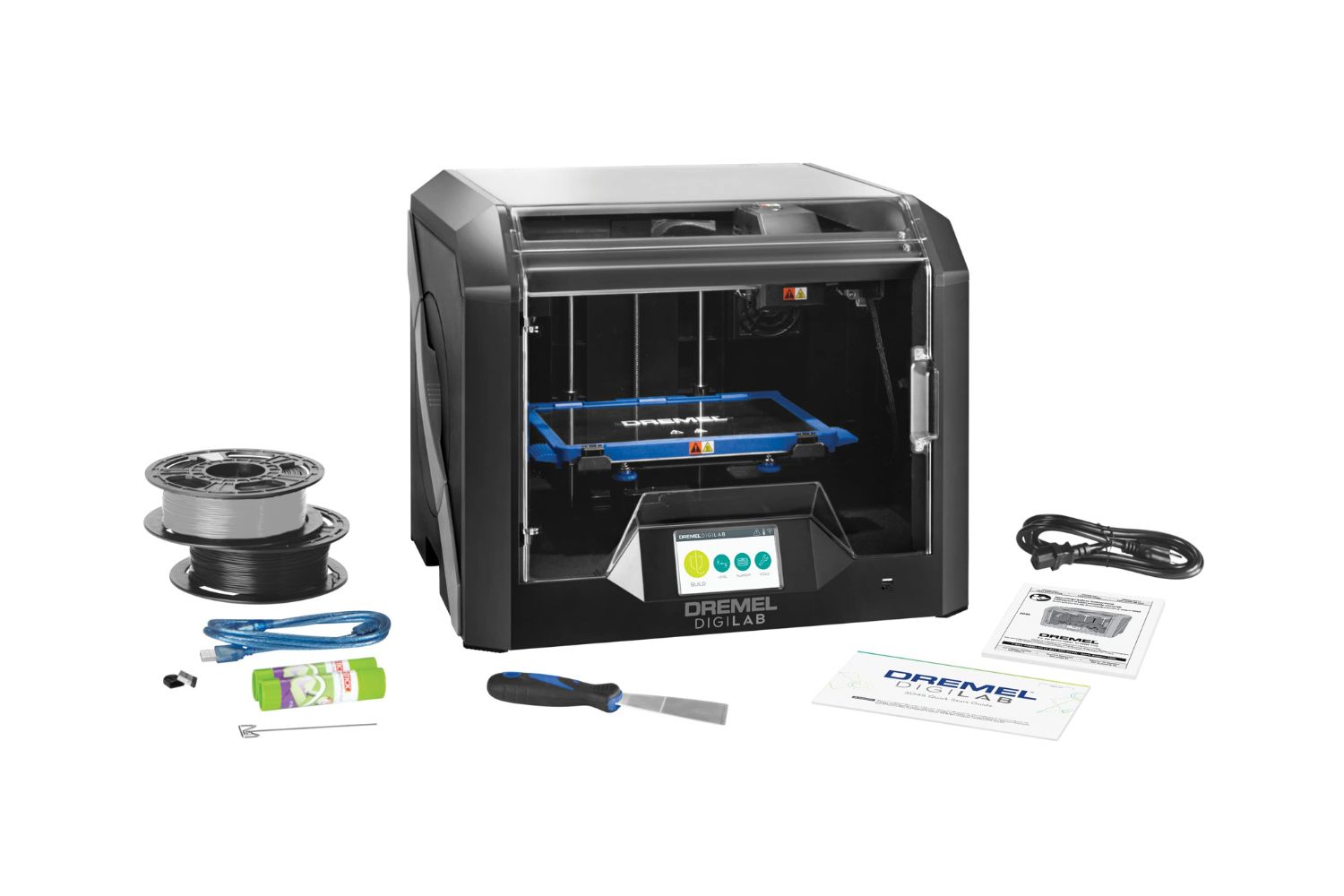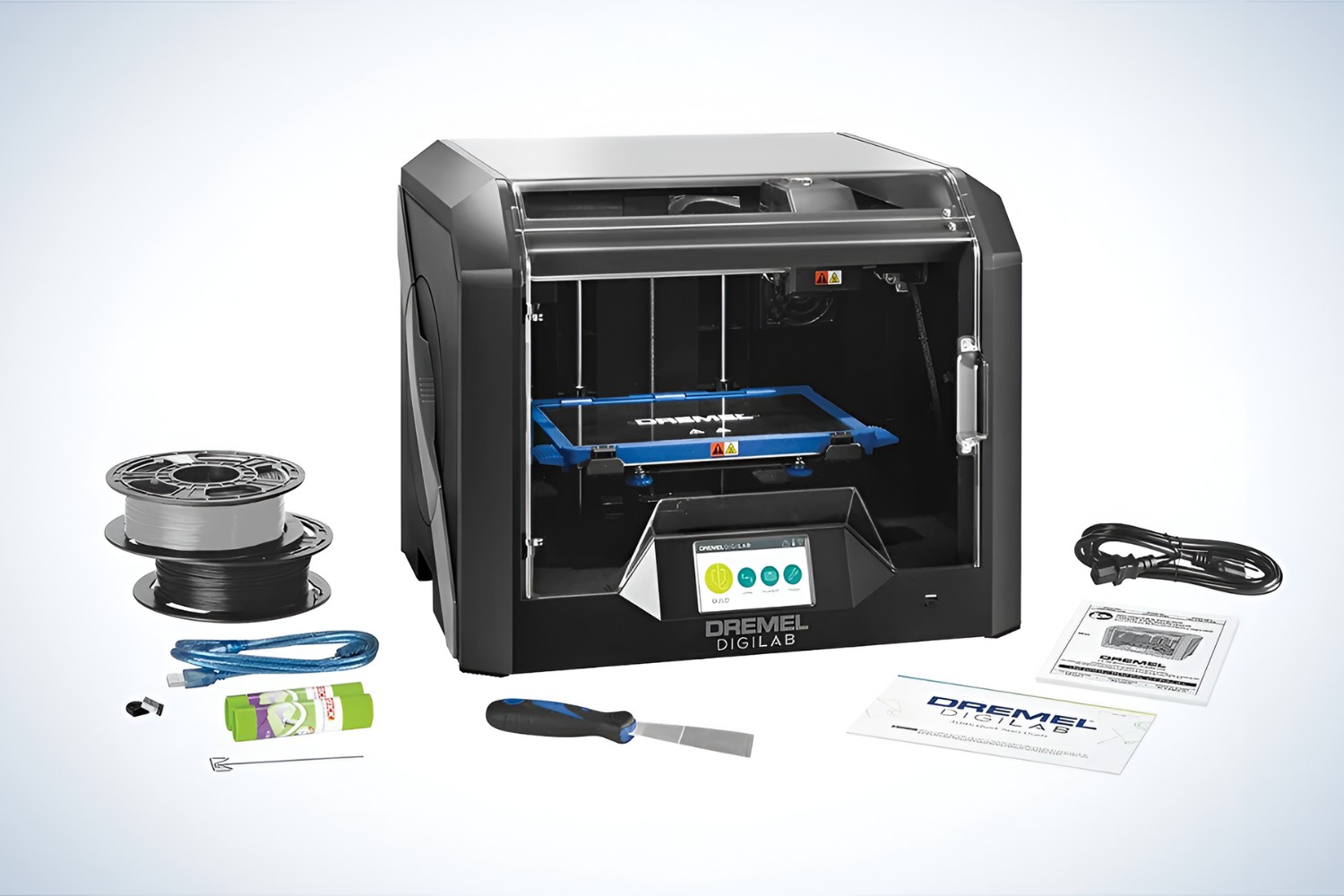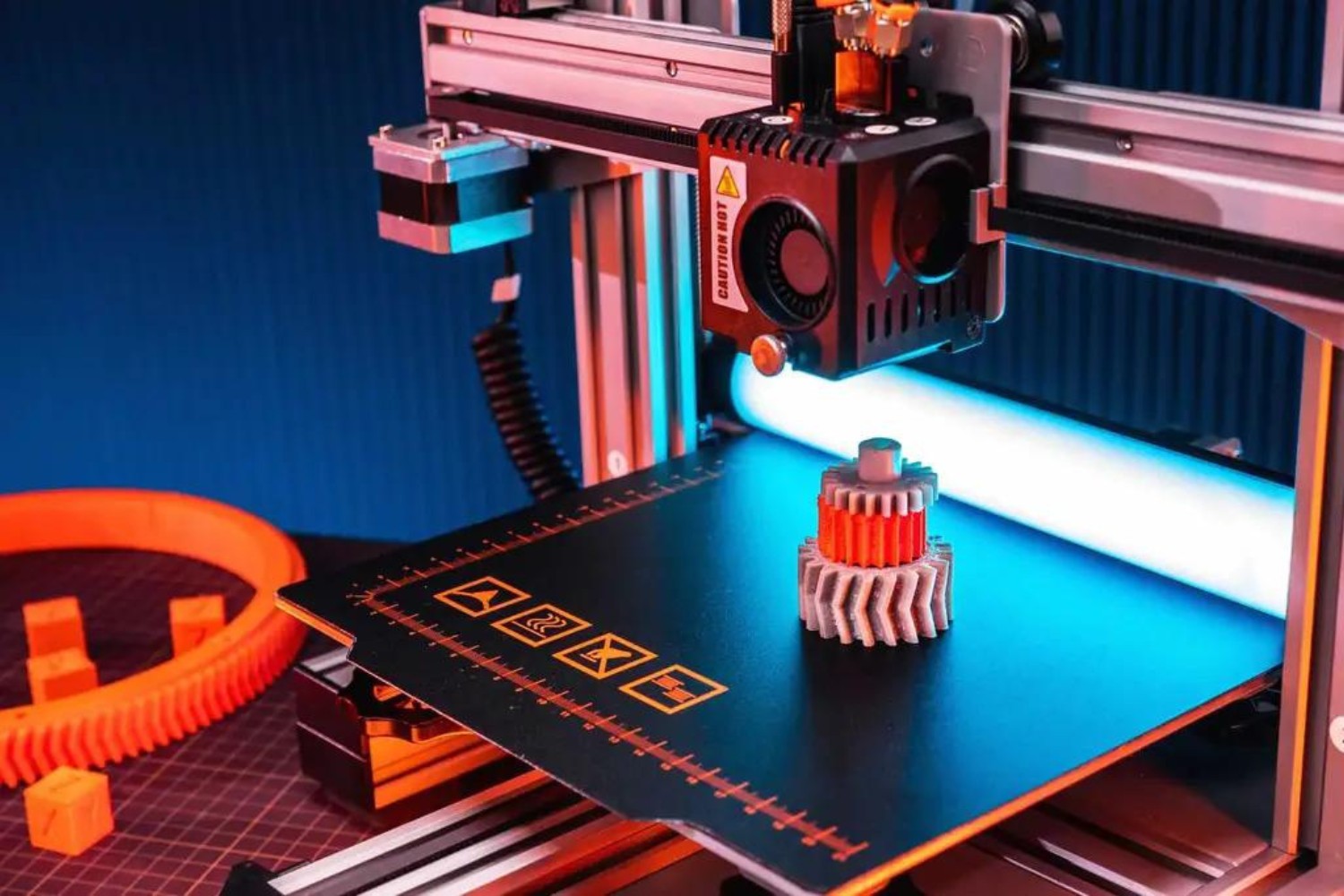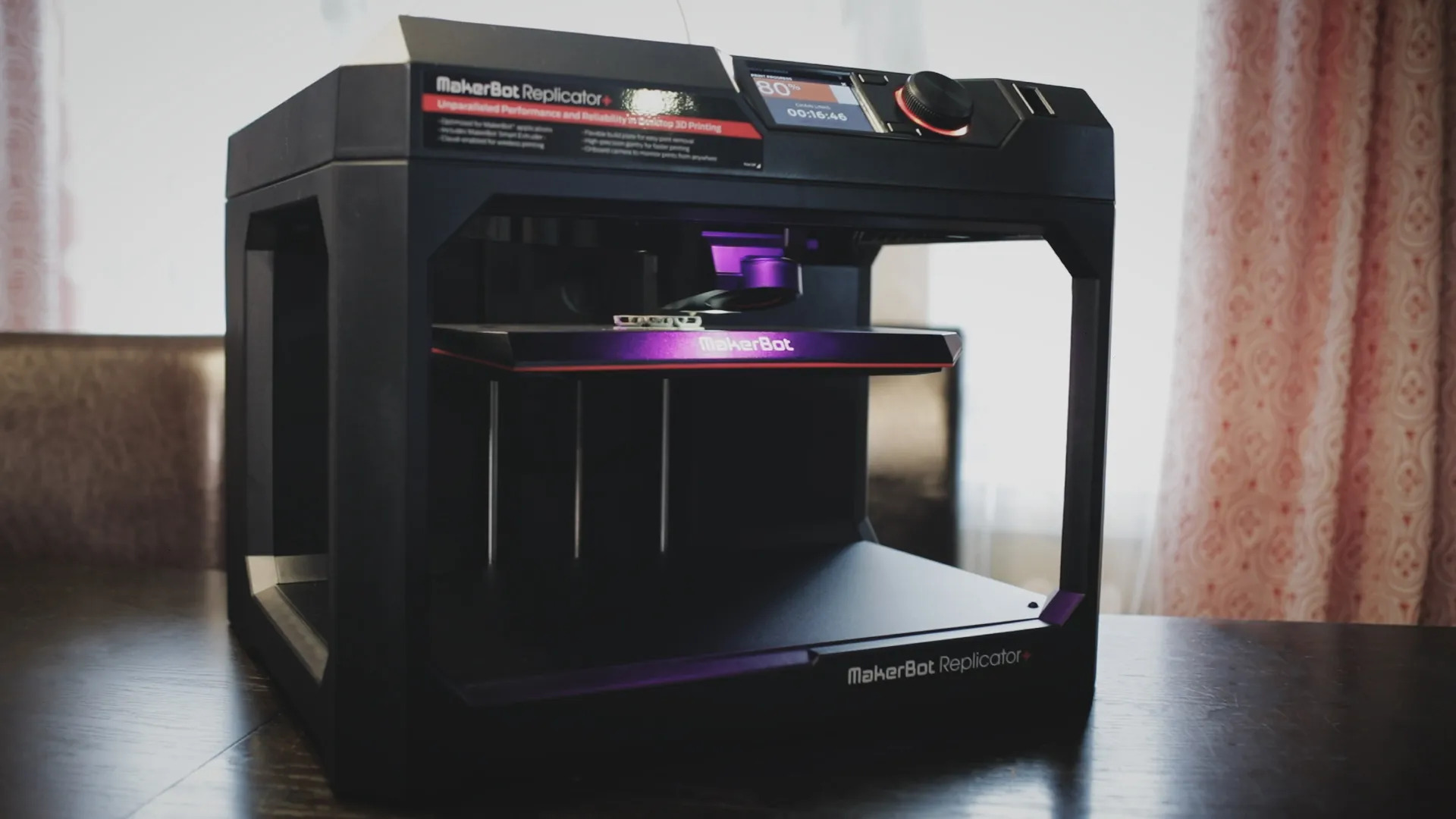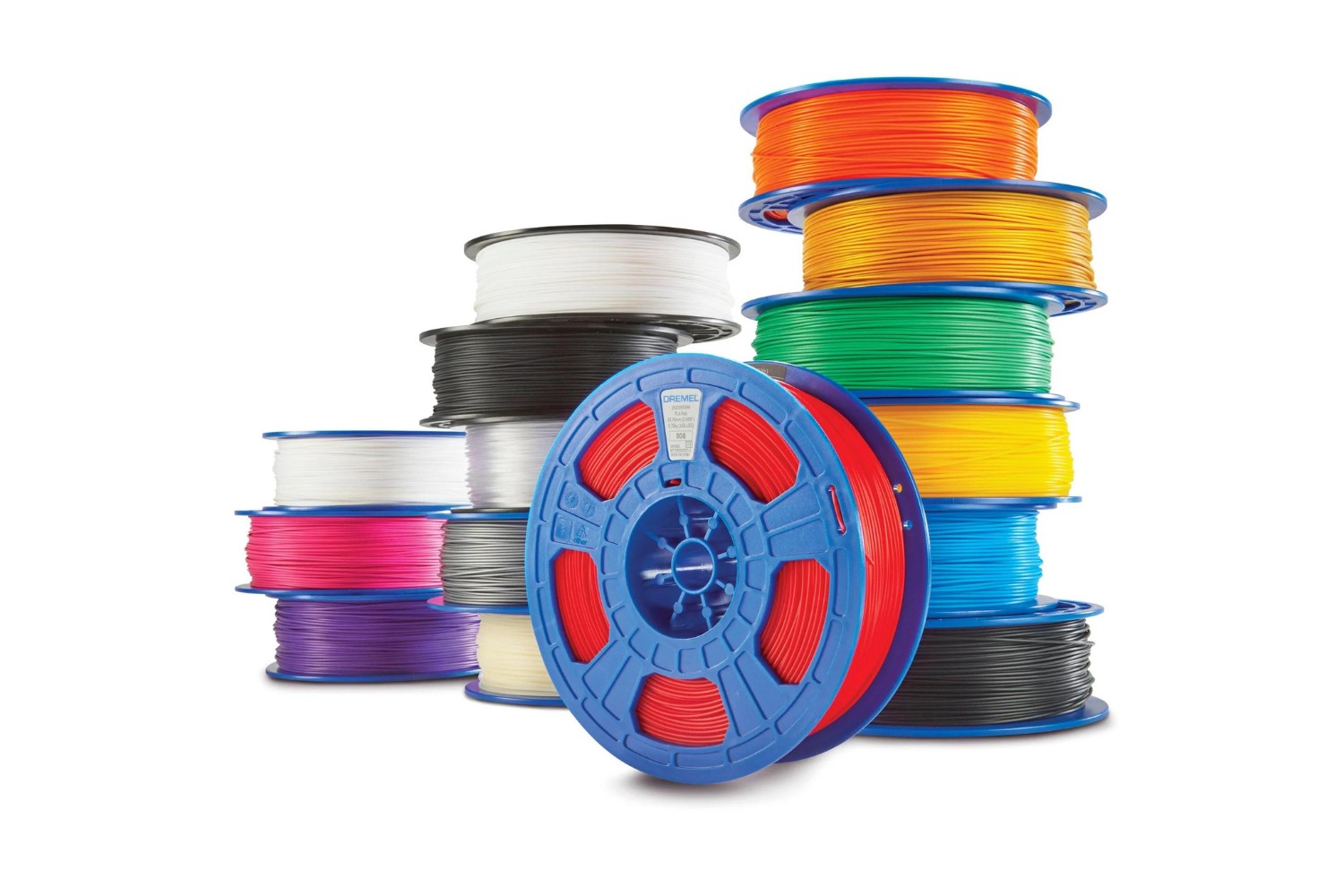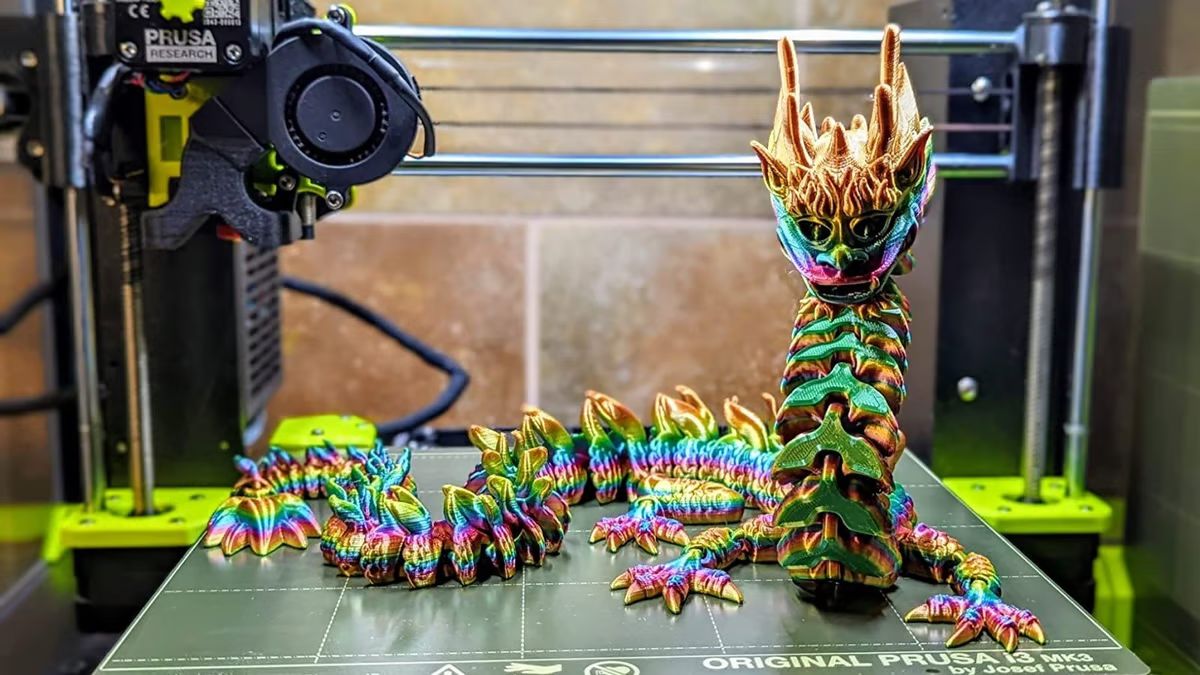Introduction
Welcome to the world of 3D printing! If you’re new to this exciting technology, you may have already discovered the abundance of 3D printer filaments available on the market. With so many options to choose from, it can be overwhelming to decide which filament is best suited for your needs.
3D printer filament is the material that is used to build your 3D printed objects layer by layer. Each filament has its own unique properties and characteristics, making it suitable for specific applications. In this guide, we will explore some of the most commonly used filaments and help you determine which one is right for you.
Before we dive into the different types of filaments, it’s important to consider your project requirements. Are you printing functional parts that need to withstand mechanical stress? Or are you creating decorative items where appearance is more crucial? The answer to these questions will guide you in making the best filament choice.
Additionally, it’s worth noting that not all filaments are compatible with all 3D printers. Make sure to check your printer’s specifications to ensure compatibility with your chosen filament.
Now, let’s explore the various 3D printer filaments and their unique characteristics, so you can make an informed decision for your next printing project.
PLA Filament
PolyLactic Acid, or PLA, is one of the most popular and widely used 3D printer filaments. It is derived from renewable resources, such as cornstarch or sugarcane, making it an eco-friendly choice. PLA filament has a low melting point, which means it requires less energy to heat and is easier to work with compared to other filaments.
One of the key advantages of PLA is its versatility. It is available in a wide range of vibrant colors and can produce high-quality prints with excellent detail and precision. PLA is also known for its low warping tendency, making it ideal for printing objects with large flat surfaces.
Another benefit of PLA filament is its odorless and non-toxic nature. This makes it suitable for use in educational settings, homes, and offices without causing any discomfort or health concerns.
However, it’s important to note that PLA may not be the best choice for functional applications that require high temperature resistance or mechanical strength. PLA has a relatively low heat resistance and can become soft or deform when exposed to high temperatures. It is more prone to brittleness and may not be suitable for heavy-duty or load-bearing objects.
Overall, PLA filament is an excellent choice for beginners and hobbyists due to its ease of use, wide color selection, and environmentally-friendly properties. It is perfect for creating prototypes, decorative items, and intricate models.
ABS Filament
Acrylonitrile Butadiene Styrene, commonly known as ABS, is a popular choice for 3D printing due to its durability and strength. ABS filament is known for its high impact resistance, making it suitable for functional and mechanical parts.
One of the main advantages of ABS is its ability to withstand higher temperatures compared to PLA. This heat resistance makes ABS filament suitable for objects that may be exposed to direct sunlight, such as outdoor signage or car parts. ABS also has good electrical insulation properties, making it suitable for prototyping electronic components.
Another benefit of ABS filament is its flexibility. It has a higher degree of flexibility than PLA, which can be advantageous when printing objects that require some flexibility or bendability, such as hinges or clips.
However, printing with ABS filament requires a heated print bed. ABS tends to warp during the cooling process, so a heated bed helps to reduce this warping effect. Additionally, ABS emits a slight odor during the printing process, and proper ventilation is recommended to ensure a comfortable working environment.
It’s worth noting that ABS filament is not eco-friendly as it is derived from petroleum-based materials. The printing process also releases potentially harmful volatile organic compounds (VOCs). Therefore, it is important to use ABS filament in a well-ventilated area or consider alternative filaments if environmental concerns are a priority.
In summary, ABS filament is an excellent choice for functional and durable prints that require higher temperature resistance and strength. It is widely used for manufacturing prototypes, mechanical parts, and objects that need to withstand impact or stress. However, it is important to take into consideration the need for a heated print bed and proper ventilation when using ABS filament.
PETG Filament
PETG, or Polyethylene Terephthalate Glycol-modified, is a versatile 3D printer filament that combines the best characteristics of both PLA and ABS filaments. It is known for its durability, flexibility, and ease of use.
One of the key advantages of PETG filament is its excellent layer adhesion. This results in strong and sturdy prints without compromising on flexibility. PETG is less prone to warping, making it an ideal choice for larger prints or those with intricate details.
Unlike ABS, PETG does not emit strong odors or release harmful fumes during the printing process. It is considered food-safe, as it is resistant to acidic and alkaline substances, making PETG suitable for 3D printing kitchen utensils or containers.
PETG filament has a higher temperature resistance compared to PLA, making it more suitable for functional parts that may be exposed to moderate heat. It is also less prone to moisture absorption, which can negatively affect print quality. This makes PETG filament more suitable for environments with higher humidity.
However, it’s important to note that PETG filament can be more challenging to print than PLA. It requires a heated print bed, typically set between 70-80 degrees Celsius, to ensure proper adhesion. Additionally, PETG has a lower melting point compared to ABS, so it may require slower print speeds and adjusted printer settings to achieve optimal results.
In summary, PETG filament bridges the gap between PLA and ABS, offering a balance of durability, flexibility, and ease of use. It is suitable for a wide range of applications, from functional parts to food-safe prints. However, it may require some adjustments to printing settings and a heated bed for optimal results.
TPU Filament
Thermoplastic Polyurethane, or TPU, is a flexible and elastic 3D printer filament. It is known for its rubber-like properties, making it an excellent choice for creating objects that require flexibility, stretch, and impact resistance.
One of the key advantages of TPU filament is its ability to withstand extreme temperatures without losing its elasticity. This makes it suitable for applications such as gaskets, seals, and other parts that need to bend or compress.
TPU filament is also resistant to abrasion and has a high coefficient of friction, allowing it to grip surfaces well. This makes it suitable for printing shoe soles, non-slip surfaces, or any object that requires traction.
Furthermore, TPU is resistant to many common chemicals, oils, and solvents, making it a preferred choice for manufacturing parts that may come into contact with corrosive substances.
When it comes to printing with TPU filament, it is important to note that it requires specific settings and adjustments compared to rigid filaments like PLA or ABS. Due to its flexibility, TPU filament may require a slower print speed and a direct drive extruder system to ensure consistent feeding and prevent filament buckling or tangling.
In terms of post-processing, TPU filament can be easily post-processed through techniques such as sanding, painting, or dyeing. However, it is important to handle TPU prints with care as they can be more delicate and prone to tearing or stretching if excessive force is applied.
Overall, TPU filament opens up a realm of possibilities for creating flexible and elastic objects. Its unique properties make it suitable for applications that require impact resistance, elasticity, and chemical resistance. With proper printer settings and adjustments, TPU filament can produce high-quality prints that fulfill various functional and creative needs.
Nylon Filament
Nylon filament is a versatile and robust 3D printer filament that offers a wide range of applications. It is known for its excellent strength, flexibility, and durability, making it suitable for both functional and aesthetic prints.
One of the key advantages of nylon filament is its high impact resistance. It can withstand stress and heavy loads, making it ideal for creating parts that require strength and durability, such as gears, brackets, and functional prototypes. Nylon filament also has excellent layer adhesion, resulting in strong and reliable prints.
Another benefit of nylon filament is its ability to absorb moisture from the air. This makes it important to store nylon filament in a dry environment or use a dedicated filament dryer to prevent moisture-related issues during printing. However, the moisture absorption also allows for easier post-processing, as nylon prints can be smoothed or polished using various techniques such as vapor smoothing or sanding.
Nylon filament has a higher melting point compared to PLA or ABS, allowing it to withstand higher temperatures without deforming or losing its properties. This makes it suitable for applications that require heat resistance, such as engine components, jigs, and fixtures.
When printing with nylon filament, it is important to note that it requires higher printing temperatures and a heated print bed to ensure proper adhesion. Additionally, nylon filament tends to release toxic fumes during printing, so proper ventilation is essential.
Moreover, nylon filament has a tendency to warp during cooling, especially on larger prints or if the print bed temperature is not adequately controlled. Using a heated enclosure or adding a brim or raft to the print can help to minimize warping issues.
In summary, nylon filament is an excellent choice for applications that require strength, flexibility, and heat resistance. It is widely used in engineering, manufacturing, and prototyping due to its durability and reliability. With proper printer settings and handling, nylon filament can produce high-quality prints for a variety of functional and aesthetic purposes.
Polycarbonate Filament
Polycarbonate filament is a strong and durable 3D printer filament known for its high impact resistance and heat tolerance. It is a popular choice for producing functional parts that require strength, durability, and transparency.
One of the key advantages of polycarbonate filament is its exceptional toughness. It can withstand high levels of impact and stress without breaking or deforming. This makes it suitable for printing objects like protective enclosures, tool handles, or components for mechanical applications.
Polycarbonate filament is also highly resistant to heat, with a melting point higher than other commonly used filaments like PLA or ABS. This heat resistance makes it suitable for applications that require exposure to high temperatures or high thermal stability, such as automotive parts or electronic casings.
In addition to its mechanical properties, polycarbonate filament is known for its transparency. It allows for the creation of clear and translucent prints, making it ideal for prototypes or objects where visual clarity is important, such as light diffusers or signage.
Printing with polycarbonate filament can be challenging due to its high printing temperature requirements. It typically requires a heated print bed and a hot-end temperature of around 250-300 degrees Celsius. Ensuring proper bed adhesion and temperature control is essential to minimize warping or lifting during the printing process.
Furthermore, polycarbonate filament emits potentially harmful fumes during printing, so proper ventilation is crucial. It is recommended to print in a well-ventilated area or with a dedicated fume extraction system to ensure a safe working environment.
Post-processing of polycarbonate prints can be done through techniques like sanding, polishing, or painting to further enhance the appearance and smoothness of the final product.
In summary, polycarbonate filament is an excellent choice for applications that require a combination of strength, heat resistance, and transparency. While it may pose challenges in terms of printing temperature and fumes, the end result of a strong and visually appealing print makes polycarbonate filament a preferred choice for functional and transparent objects.
Wood Filament
Wood filament is a unique 3D printer filament that combines a mixture of polymer and wood fibers. It allows you to create prints that have the look, feel, and even the smell of real wood. This filament is an excellent choice for adding a natural and rustic touch to your 3D printed creations.
One of the key benefits of wood filament is its aesthetic appeal. It allows you to replicate the natural grain and texture of different wood types, including oak, pine, or mahogany. This makes it perfect for creating decorative items, architectural models, or artistic sculptures.
Wood filament has a higher melting temperature compared to traditional PLA or ABS filaments. It typically requires a heated print bed and a slightly higher nozzle temperature to achieve optimal results. However, it is important to note that wood filament is less rigid than other filaments and may require well-calibrated settings to prevent clogging or excessive oozing.
When printing with wood filament, it is recommended to use a larger nozzle size, such as 0.4 mm or above, to allow the wood fibers to flow smoothly through the extruder. This helps to enhance the wood-like appearance and texture of the finished print.
Post-processing of wood filament prints is possible, allowing you to further enhance the wooden look. Sanding can help smoothen the surface and accentuate the grain pattern, while staining or sealing can bring out the natural colors and protect the print from moisture damage.
However, it’s important to note that wood filament does not have the same structural strength as regular wood. It is not as strong or durable, and the wood fibers can be prone to breakage or wear over time. Therefore, wood filament is more suited for decorative or artistic purposes rather than functional or load-bearing objects.
In summary, wood filament is a fantastic choice for adding a natural and rustic touch to your 3D printed projects. Its ability to replicate the appearance and texture of wood makes it perfect for decorative items, architectural models, or artistic creations. While it may not have the same strength as real wood, wood filament allows you to bring the beauty of nature into your 3D printed designs.
Metal Filament
Metal filament is a unique and innovative 3D printer filament that allows you to create prints with a metallic finish, resembling actual metal objects. This filament is created by mixing fine metal powders, such as copper, brass, or aluminum, with a base polymer material.
One of the main advantages of metal filament is its ability to produce prints with a metallic appearance and feel. It allows you to create objects that mimic the look and texture of metal, which can be used for a wide range of applications, including jewelry, decorative items, and prototypes.
The metal content in the filament gives the prints a higher density and weight, providing a realistic metal-like feel. This makes metal filament an excellent choice for creating objects that need to replicate the weight and balance of real metal pieces.
While metal filament does contain actual metal particles, it’s important to note that the prints are not solid metal. The metal particles are dispersed within the polymer matrix, providing the appearance of metal but with less strength and durability compared to actual solid metal objects.
Printing with metal filament may require some specific considerations. It typically requires a heated print bed and a nozzle with increased wear resistance due to the abrasive nature of metal particles. The printing temperature and speeds may also need to be adjusted for optimal results, as each type of metal filament may have different requirements.
Post-processing of metal filament prints can be done to enhance the metallic look further. Sanding, polishing, or applying a metal patina can help to achieve a more realistic metal finish.
It’s worth noting that metal filament can be more expensive compared to other types of filaments due to the inclusion of metal particles. Additionally, the metal content can make the filament more prone to moisture absorption, so proper storage and handling are crucial to maintain the quality of the filament.
In summary, metal filament is a fantastic option for creating prints with a metallic appearance and feel. While not as strong or durable as solid metal, metal filament allows you to add a realistic metal touch to your 3D printed objects. With the right settings and post-processing techniques, metal filament can produce stunning results for various applications.
Conclusion
Choosing the right 3D printer filament is essential to ensure the success of your printing projects. With a wide range of options available, each filament offers unique properties and characteristics suited for different applications.
PLA filament provides versatility, ease of use, and is environmentally friendly, making it an excellent choice for beginners and hobbyists. ABS filament offers high durability and heat resistance but requires a heated print bed and proper ventilation during printing. PETG filament combines the best of both worlds, providing strength, flexibility, and resistance to moisture absorption.
TPU filament offers exceptional flexibility and elasticity, making it suitable for applications that require impact resistance and stretchability. Nylon filament provides strength, heat resistance, and excellent layer adhesion, making it ideal for functional and mechanical parts.
Polycarbonate filament offers high impact resistance, heat tolerance, and transparency, making it a preferred option for durable and visually appealing prints. Wood filament allows you to add a natural and rustic touch to your prints, creating objects with the appearance and feel of real wood.
Metal filament offers the ability to create prints with a metallic finish, perfect for jewelry, decorative items, or prototypes. However, it’s important to note that metal filament prints are not solid metal and do not possess the same strength and durability as solid metal objects.
When choosing the right filament, consider your project requirements, such as the desired strength, flexibility, appearance, and temperature resistance. Also, take into account the specific printing requirements and post-processing techniques associated with each filament type.
By understanding the characteristics and applications of different filaments, you can select the most suitable filament for your specific needs. Experimenting with various filaments will allow you to unleash your creativity and take your 3D printing projects to the next level!







